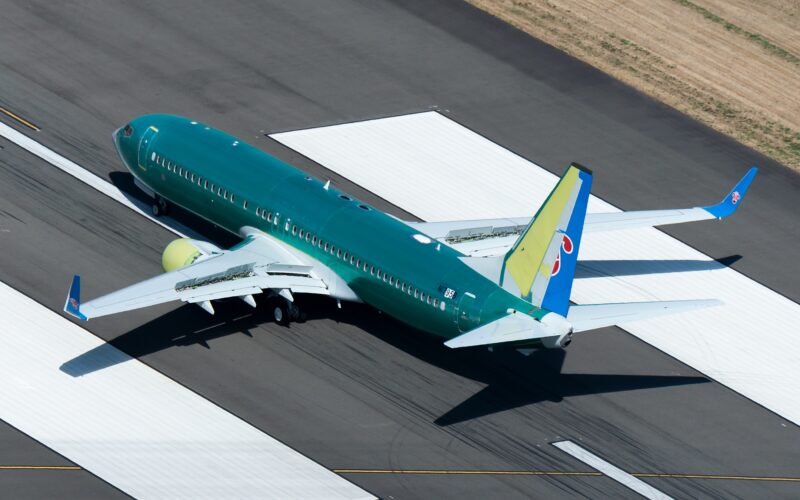The United States (US) Federal Aviation Administration (FAA) has issued an Airworthiness Directive (AD) that addresses missing shims on Boeing 737 NextGeneration (NG) aircraft, namely the -600, -700, -700C, -800, -900, and -900ER.
According to the FAA, the AD was prompted by “reports of missing shims, a wrong type of shim, shanked fasteners, fastener head gaps, and incorrect hole sizes common to the left and right sides at a certain station (STA) frame inner chord and web”. To comply with the directive airlines will have to inspect for existing repairs as well as cracking and, if required, perform on-condition actions.
“The FAA is issuing this AD to address cracking in the left and right sides of STA 727 frame inner chord and S–18A web before the cracking reaches a critical length,” the agency continued, adding that the cracking could result “in fatigue critical baseline structure (FCBS) and the inability of a principal structural element (PSE) to sustain limit load, which could adversely affect the structural integrity of the airplane”.
This is a final rule AD with an effective date of May 30, 2023. The authority estimated that the directive will affect 1,925 Boeing 737 NGs registered in the US, estimating and calculating that a general visual inspection and inspection of the high frequency eddy current (HFEC) and shim installation will cost $170 and $425 per operator, respectively. Meanwhile, “on-condition actions include installation of a new shim, a surface HFEC inspection of the STA 727 frame inner chord at S–18A for cracking, and repair,” and is estimated to cost $225 per aircraft.
The STA 727 frame inner chord is located just behind the wings of the Boeing 737 in section 46 of the fuselage.
Several parties, including American Airlines, Aviation Partners Boeing (APB), Boeing, Southwest Airlines, and United Airlines, as well as one individual, commented on the AD. Of note, APB and Southwest Airlines requested the FAA add that the installation of blended or split scimitar winglets with the Supplemental Type Certificate (STC) ST00830SE will not affect compliance with the AD, with the agency agreeing to the request.
In addition, Southwest Airlines requested that general visual inspections would be optional for aircraft on which the Boeing Alert Requirements Bulletin 737–53A1385 RB has already been completed. The FAA partially agreed, noting that the RB “specifies inspecting for existing repairs, contacting Boeing if any repair is found, and checking for a gap if no repair is found”. Furthermore, the agency agrees that there is no need to repeat reports for Boeing Alert Requirements Bulletin 737–53A1402 RB if an inspection was carried out according to the Boeing Alert Requirements Bulletin 737–53A1385 RB.
Rather than making the action optional, the FAA instead added a paragraph that gives credit to operators who have completed the task before the effective date of this AD.
The FAA noted that “rather than making this required action option” a paragraph had been added to the AD “giving operators credit for completing that task” before the effective date.

